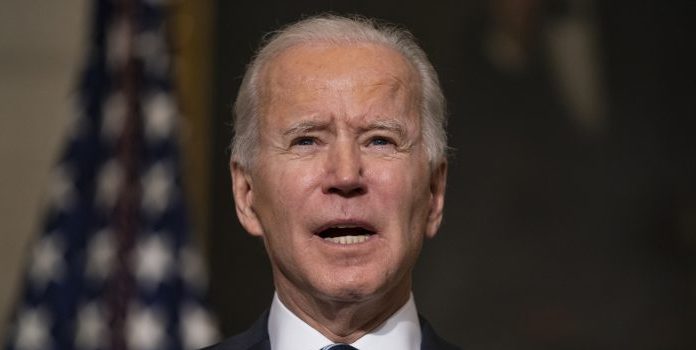(Headline USA) The Congressional Budget Office estimated Thursday that persistent budget deficits will cause the federal debt to double in size over the next 30 years.
Following the 2008 financial crisis and the pandemic, the government has depended heavily on borrowing and low interest rates to help an ailing economy.
But as the economy is expected to heal, the CBO has forecasted that interest rates will rise and spending on programs such as Social Security and Medicare will increase.
The estimates do not include President Joe Biden‘s proposed $1.9 trillion coronavirus “relief package” — of which less than 10 percent of its spending addresses actual virus relief measures — which would further add to the deficit in hopes of speeding faster growth and hiring.
Republican Sen. Rick Scott of Florida accused the president of ignoring the federal debt.
“It seems that the Biden Administration couldn’t care less,” he said in a statement. “With our nation moving toward a dangerous future of increased inflation, President Biden and Democrats in Congress insist on pushing a wasteful $1.9 trillion ‘COVID’ spending bill that funds liberal priorities while hiking our federal debt to nearly $30 trillion.”
Federal Reserve Chairman Jerome Powell suggested Thursday that inflation will pick up in the coming months but that it would likely prove temporary and not enough for the Fed to alter its record-low interest rate policies.
Excluding Biden’s aid plan, the annual budget deficit would be equal to 10.3% of this year’s gross domestic product, a measure of the total size of the U.S. economy.
The annual deficit as a percentage of GDP would decline over the next decade and then rise in the following decades to reach 13.3% in 2051.
All of that translates into the U.S. government carrying a higher debt load.
The CBO said that publicly held debt would equal 102% of this year’s GDP.
It estimated that the accumulated debt would grow to 202% of GDP by 2051.
Still, the CBO foresees strong economic growth that will lead to higher payroll tax revenues.
It estimates that Social Security will exhaust its combined trust funds in calendar year 2032, one year later than it forecasted in September.
Adapted from reporting by Associated Press.

